IP Infusion OcNOS
IP Infusion OcNOS (Open Compute Network Operating System) is an industry-leading Network Operating System (NOS) providing the most complete carrier-grade disaggregated solution for service providers. OcNOS-based solutions have been widely deployed in access, aggregation, transport and data center use cases for simplified operations and automation. It provides extensive programmability for end-to-end network management and orchestration.
Operators can achieve major advantages using OcNOS + Whitebox hardware:
- Lower TCO: Up to 65-75% savings against legacy equipment vendors
- Standard Cisco-like CLI
- World-class 24/7/365 support
- Scale up to Terabit switching bandwidth
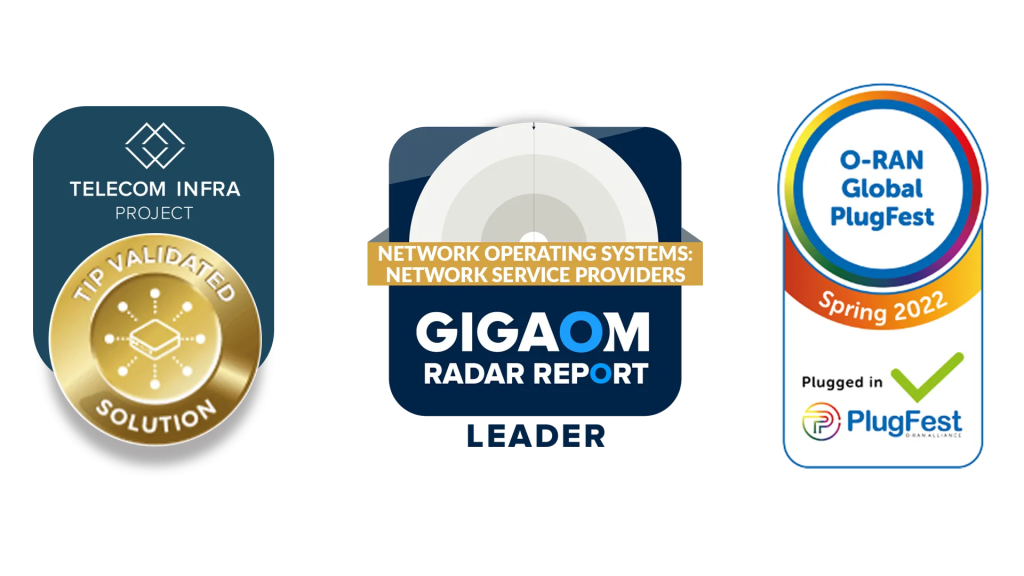
OcNOS features a single software image that runs across the entire portfolio of Open Compute platforms from leading vendors. This guarantees consistent operations, workflow automation and high availability, while significantly reducing operational expenses.
OcNOS provides industry standard CLIs, supports standard MIBs as well as the latest network management tools.
Its integrated centralized management and provisioning layer allows for transaction-based configuration and device feature modelling. OcNOS is a modular, multi-tasking NOS, with tight integration capabilities on commodity hardware. This design allows for scaled and performance critical deployments.
OcNOS works on a large number of whitebox hardware and supports multiple use cases:
- Broadband Access
- Cell Site Router
- Provider Edge Routing
- Router Optical Networking
- Data Center
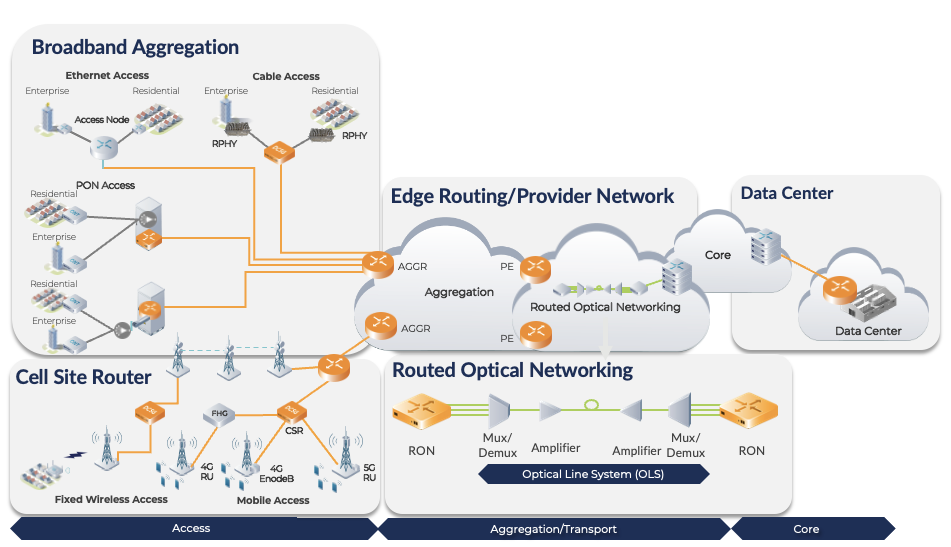
OcNOS for Datacenter
The following are key benefits of the OcNOS Data Center:
- Full network migration of disaggregated networking solutions at Tier-1 Internet Exchange
- Flexible disaggregated network for scaling more subscribers
- Small footprint resulting from an optimized design
- Efficiently aggregate traffic at scale of up to 3.2 Tbps
- Proven migration for legacy services
- Enables hardware independence delivering faster roll-out of new services and shorter time-to-market
- Simplify operations to reduce Total Cost of Ownership (TCO)
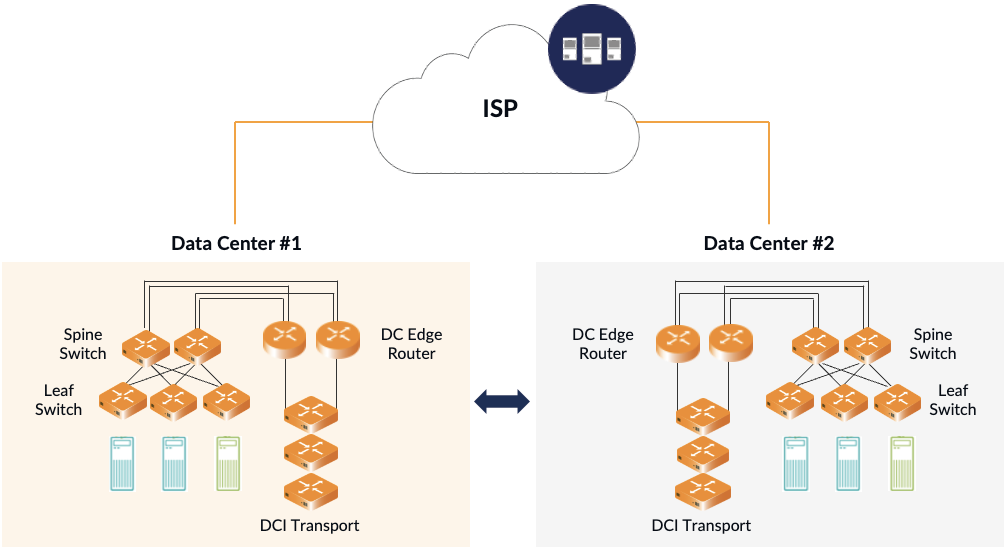
Key features
- Network transformation into a flexible and scalable fabric
- Port and bandwidth scalability for Triple-play services
- EVPN-VxLAN
- IPoDWDM
Use cases
- DC-CLOS
- Multi-tenant DC (Underlay + Overlay)
- BGP Peering Router
- Data Center Interconnect
OcNOS Aggregation Router
The IP Infusion OcNOS Aggregation Router fits seamlessly with traditional services like Layer 2 VPN (L2VPN), Layer 3 VPN (L3VPN), Virtual Private Wire Service (VPWS) and Virtual Private LAN Service (VPLS). It provides advanced services like Ethernet VPN (EVPN) with traditional and next-generation transport including Multiprotocol Label Switching (MPLS), Virtual Extensible LAN (VxLAN), Segment Routing (SR) and SRv6. It allows for migration paths between traditional and next-generation transports and services.
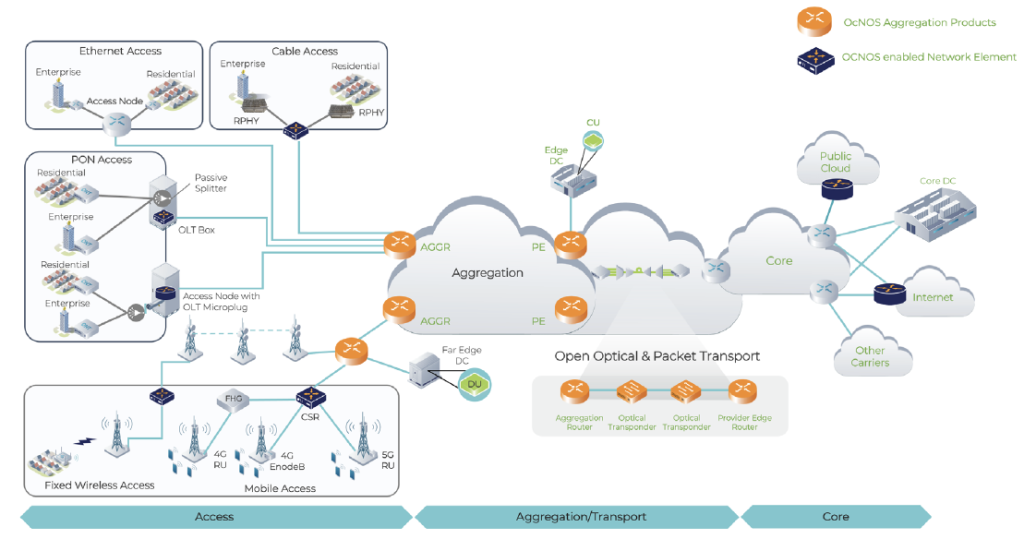
The following are key benefits of the OcNOS Aggregation Router:
- Efficiently aggregate traffic at scale of up to 4.8 Tbps
- Proven migration for legacy services
- Enables hardware independence delivering faster roll-out of new services and shorter time-to-market
- Simplify operations to reduce Total Cost of Ownership (TCO)
OcNOS Cell Site Router (CSR)
The IP Infusion OcNOS network operating system-based solution supports cost optimized white-box cell site gateway devices based on and fully compliant with Telecom Infra Project’s (TIP) DCSG specifications, including support for segment routing, Multiprotocol Label Switching (MPLS), and timing. This DCSG solution provides cell site backhaul networking for carriers with existing 4G LTE and future 5G mobile infrastructure. The OcNOS cell site router solution is available on a wide variety of DCSG platforms supporting varied switching capacities.
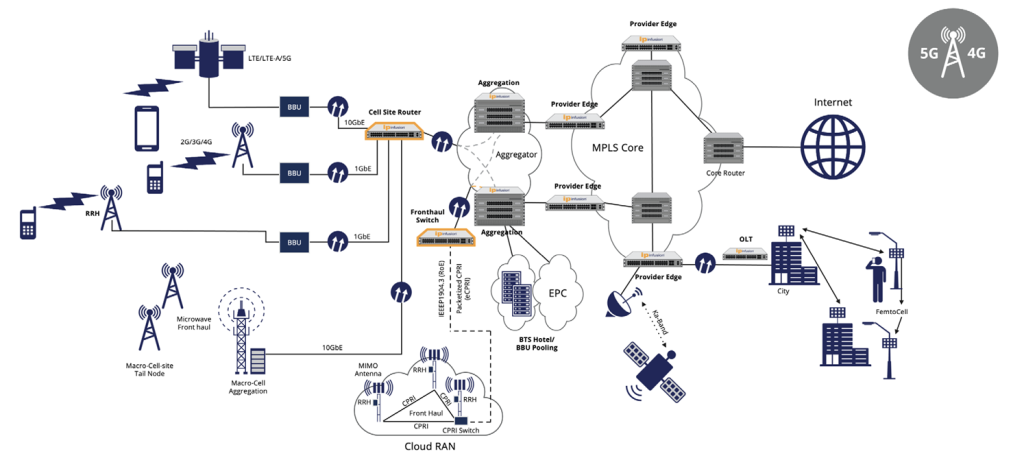
Key CSR ODM Hardware Highlights
- Extremely compact, low-power design
- Flexible form factors for both indoor and outdoor deployments
- Highly integrated design: 1-100G interfaces, rich set of QoS capabilities, flexible management options, and integrated timing in a single box
- Versatile licensing scheme to enable a range of commercial objectives
- 1 RU small form factor ODM hardware with depth <300mm
- Front-to-back as well as side-to-side airflow
- Low power consumption, minimum <100W, typical <200W, maximum 250W
- Low latency forwarding
- Precise frequency and phase/time synchronization using the latest industry standards
- NETCONF/OpenConfig standards based management interface
OcNOS Routed Optical Networking (RON)
IP Infusion’s Routed Optical Networking (RON) product portfolio provides IPoDWDM optical transport for Data Center Interconnect (DCI), metro and long-haul applications. While the aggregation network aggregates the traffics from various access networks, the Routed Optical Network routes and transports this traffic over IPoDWDM optical open line systems to remote ends of the network.
The RON solution consolidates and simplifies multilayer traditional IP, MPLS, and DWDM network architectures into a single layer IPoDWDM packet optical transport network as shown below.
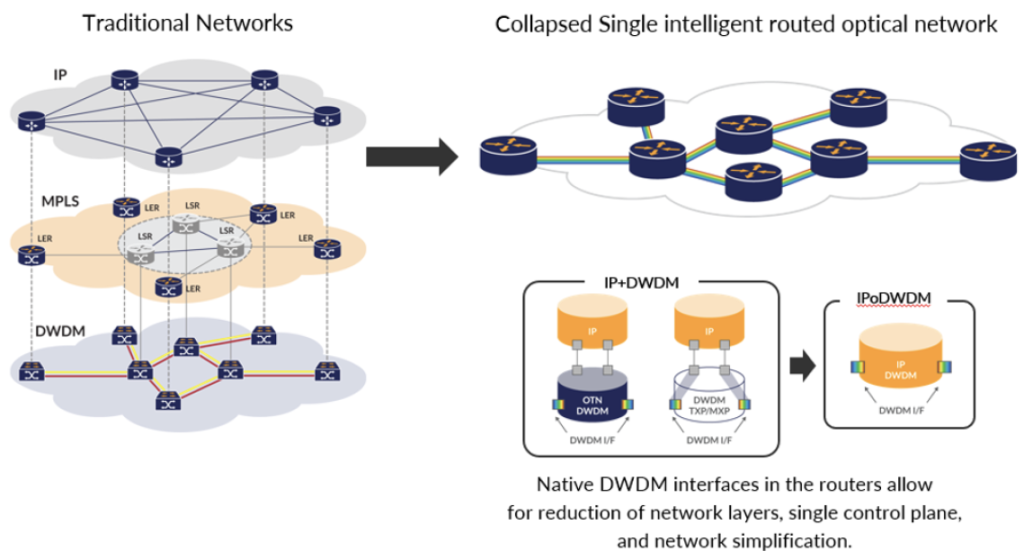
- Flexible disaggregated network for scaling more subscribers by increased capacity per fiber
- Efficiency
- Reconfigurable optical add-drop multiplexer (ROADM), switching traffic at λ level, reducing latency, footprint, power, complexity
- Migration to FlexGrid ROADM: Support traffic volumes of hundreds Tb/s or even some Pb/s
- Coherent pluggable
- Service agility: Extensive use of coherent pluggable optics
- Seamless migration from legacy to next gen networks
- Open Routed Optical Networking
- Moving from Layered Architecture to Flat Hop-by-Hop Architecture
- Collapsing management plane and control plane, DWDM, RON & packet
- Enables hardware independence delivering faster roll-out of new services and shorter time-to-market
